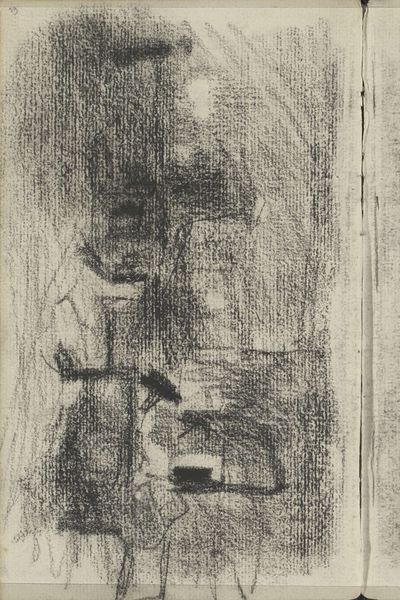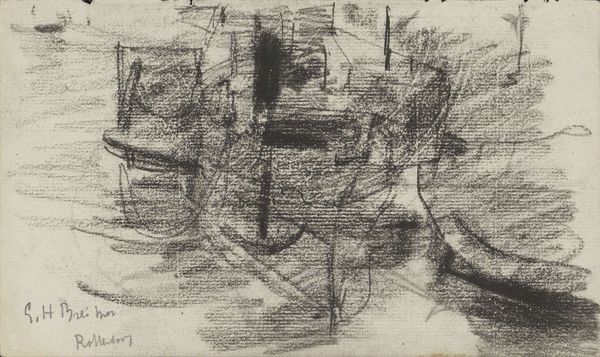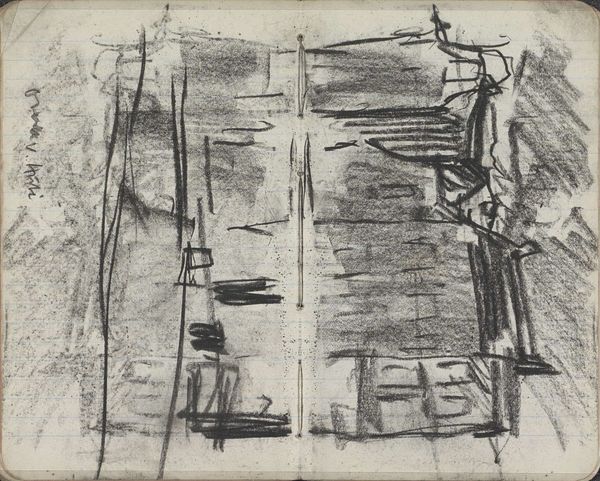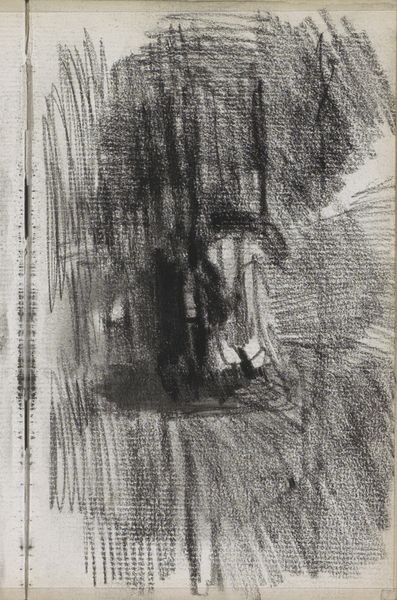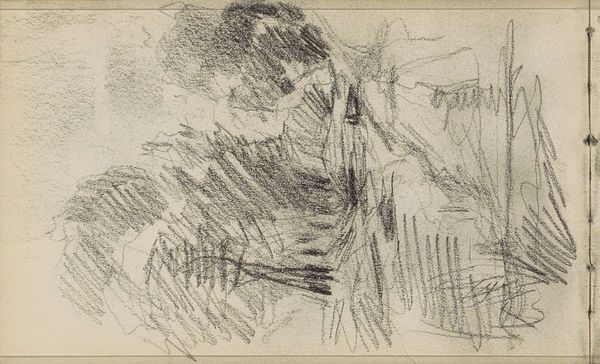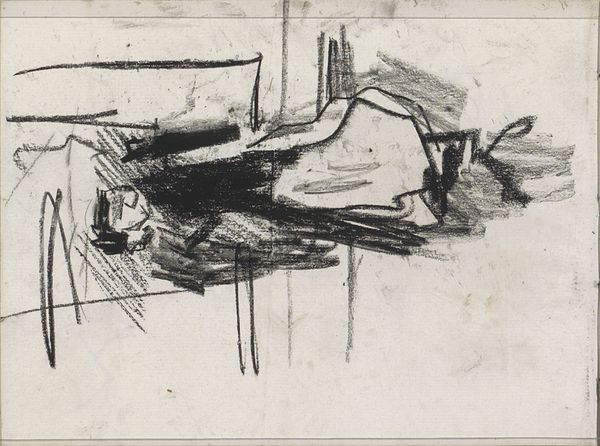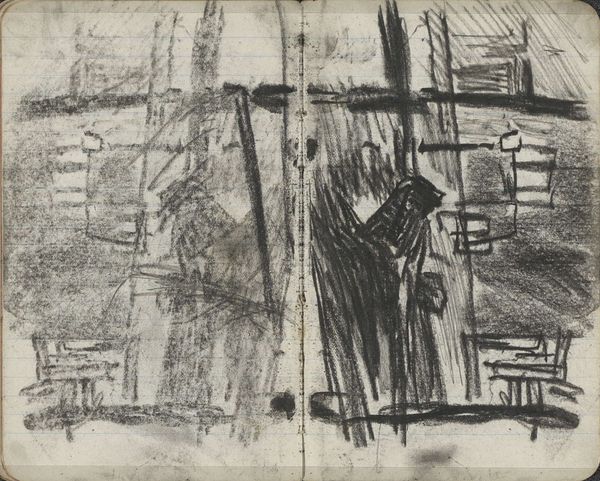
#
pencil drawn
#
amateur sketch
#
toned paper
#
light pencil work
#
pencil sketch
#
incomplete sketchy
#
personal sketchbook
#
pen-ink sketch
#
sketchbook drawing
#
sketchbook art
Copyright: Rijks Museum: Open Domain
This drawing, possibly depicting a street scene, was made by George Hendrik Breitner, likely in the late 19th or early 20th century. He used graphite on paper. The immediacy of the material is key here. Graphite, essentially pencil lead, allows for quick, expressive marks, ideal for capturing a fleeting moment. The roughness of the strokes conveys the dynamism of city life and the urgency of the artist’s vision. Breitner was known for documenting the everyday, often focusing on the working classes of Amsterdam. The choice of graphite, a relatively inexpensive and accessible medium, aligns with this focus. Unlike oil paint, which demands extensive preparation and studio space, graphite allowed Breitner to sketch directly from life, embedding his practice within the urban environment. By embracing such accessible materials and direct methods, Breitner challenged the traditional hierarchy between fine art and everyday observation. The raw energy of the graphite lines becomes a powerful means of conveying the social realities of his time.
Comments
No comments
Be the first to comment and join the conversation on the ultimate creative platform.


